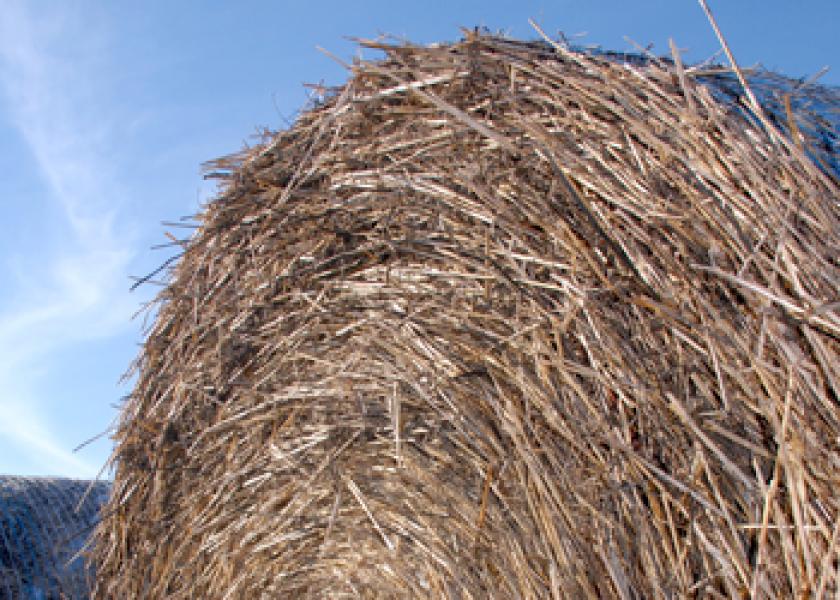Tips on Adding Hay or Straw for Effective Fiber

By Jud Heinrichs, Professor of Dairy Science and Javier Suarez, Graduate Student, Penn State
Penn State research suggests that when low quality forage is added to the diet to achieve extra chewing or rumination, chopping it fine enough to minimize sorting will help cows to consume the amount of forage desired and still provide physically effective fiber.
Results of Penn State research into the effects of chop length when feeding low quality hay or straw to late lactation or dry cows were recently published in the journal Animal.
The paper describes two experiments that investigated rumen fermentation, sorting behavior, and chewing activity of cows; in this case cows with low overall energy requirements. In both experiments, the diets provided a similar amount of physically effective fiber even though the forage particle length was very different.
In the first experiment, cows averaged 434 days in milk and were fed a diet of 50% first-cutting orchard grass hay and 50% grain. Hay was chopped to three different lengths: short (0.21 ± 0.15 in), medium (0.35 ± 0.17 in), or long (3.07 ± 0.16 in).
In the second experiment, the same cows, which were now dry, were fed a diet of 75% oat straw and 25% grain. Grain was top-dressed and molasses was added to improve palatability of the straw. Straw was chopped to three different lengths: short (0.40 ± 0.11 in), medium (0.97 ± 0.15 in), or long (3.16 ± 0.14 in).
Despite the wide range in the length of forage particles, no differences were observed in chewing activity, rumen pH, or rumen fill in either experiment. However, as the particle length of the diet increased, cows sorted against longer particles.
These results suggest that when low quality forage is added to the diet to achieve extra chewing or rumination for various reasons, chopping it fine enough to minimize sorting will help cows to consume the amount of forage desired as determined from the ration formulation and still produce the desired outcome of providing more physically effective fiber to the ration.
For More Information
Get the latest dairy news and nutrition updates.







